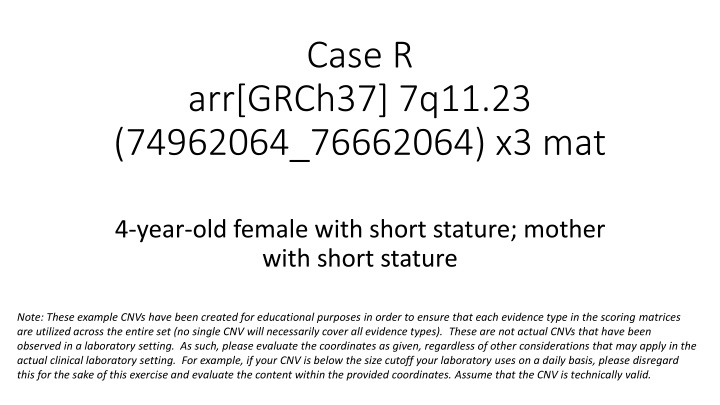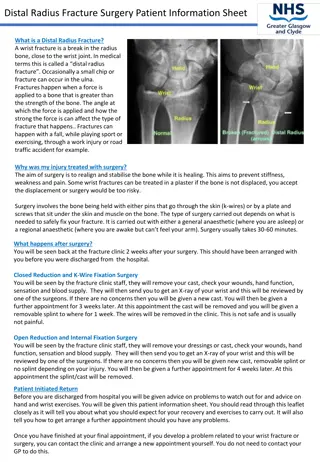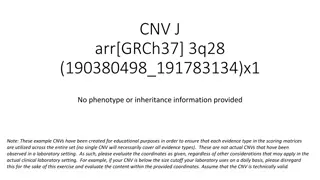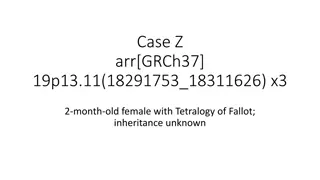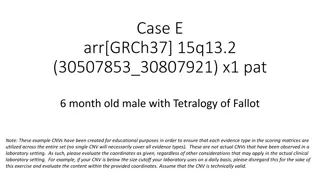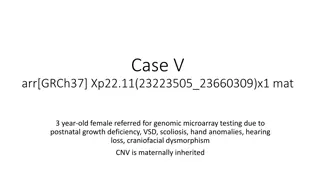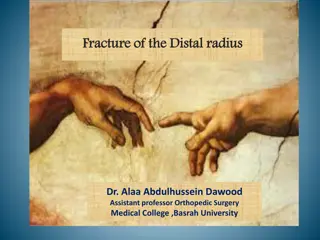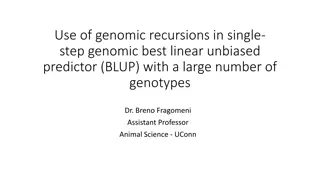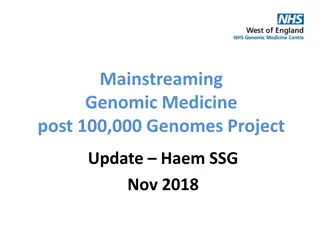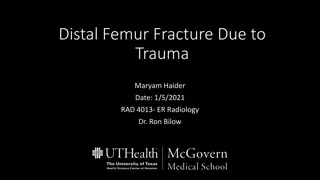Detailed Evaluation of Genomic Content - CNV.R Overlaps 7q11.23 Distal Region
This detailed evaluation assesses the genomic content of CNV.R, focusing on its overlap with the 7q11.23 recurrent distal region and genes like HIP1 and YWHAG. The analysis considers the TS scores and potential impacts on Williams syndrome.
Download Presentation

Please find below an Image/Link to download the presentation.
The content on the website is provided AS IS for your information and personal use only. It may not be sold, licensed, or shared on other websites without obtaining consent from the author.If you encounter any issues during the download, it is possible that the publisher has removed the file from their server.
You are allowed to download the files provided on this website for personal or commercial use, subject to the condition that they are used lawfully. All files are the property of their respective owners.
The content on the website is provided AS IS for your information and personal use only. It may not be sold, licensed, or shared on other websites without obtaining consent from the author.
E N D
Presentation Transcript
Case R arr[GRCh37] 7q11.23 (74962064_76662064) x3 mat 4-year-old female with short stature; mother with short stature Note: These example CNVs have been created for educational purposes in order to ensure that each evidence type in the scoring matrices are utilized across the entire set (no single CNV will necessarily cover all evidence types). These are not actual CNVs that have been observed in a laboratory setting. As such, please evaluate the coordinates as given, regardless of other considerations that may apply in the actual clinical laboratory setting. For example, if your CNV is below the size cutoff your laboratory uses on a daily basis, please disregard this for the sake of this exercise and evaluate the content within the provided coordinates. Assume that the CNV is technically valid.
Clinical Information arr[GRCh37] 7q11.23 (74962064_76662064) x3 mat 4-year-old female with short stature Mother also has short stature and carries the variant Use the GAIN scoring metric
Section 1: Initial Assessment of Genomic Content Case R Genes Involved Would apply category 1A (contains protein-coding or other known functionally important elements), as this duplication involves numerous protein-coding genes. 0 points; continue evaluation Total: 0 points
Section 2: Overlap with Established TS, HI, or Benign Genes/Genomic Regions 2 known recurrent regions: Williams syndrome and distal 7q11.23 Case R ClinGen Curated Track CNV R overlaps with the 7q11.23 recurrent distal region. As of July 2020, this region has been curated by ClinGen, but does not have either a HI or TS score of 3, which is why it does not appear in the UCSC ClinGen curated track. Total: 0 points
Section 3: Evaluation of Gene Number CNV R contains 18 protein-coding genes (3A, 0 points). Total: 0 points
Section 4: Detailed Evaluation of Genomic Content CNV R overlaps the 7q11.23 recurrent distal region, including the genes HIP1 and YWHAG As of July 2020, this region has a TS score of 1. Per coordinates provided, does not appear to overlap with the classic Williams syndrome region, which has a TS score of 3. Assume for the purposes of this example that this has been confirmed, and that there are no technical reasons to be concerned that CNV R includes any part of the typical Williams region. Let s begin by evaluating the evidence documented in the ClinGen TS evaluation.
Distal 7q11.23 duplications Ramocki et al. 2010 (PMID:21109226): Family 11: 3-month-old male with history of large posterior encephalocele, Chiari III malformation, hydrocephalus Smaller duplication identified (includes HIP1, but not YWHAG) Paternally inherited Father with history of spinal cord schwannoma Family 12: 16-year-old male with history of bipolar disorder, ADHD, aggressive behavior Duplication more typical in size, includes both HIP1 and YWHAG Duplication also observed in 5-year-old sister with history of speech delay, ADHD, and aggressive behavior Not maternally inherited; father unavailable for testing ( in prison )
Distal 7q11.23 duplications Faundes et al. 2016 (PMID:27867344) 16-year-old female with history of obesity, mild intellectual disability, aggressive behavior, ADHD Mother said to have lower IQ, brother said to have bipolar disorder Proband had array, karyotype, and Prader Willi testing Duplication involving both HIP1 and YWHAG; de novo
Case-Control Studies Case R Segmental Duplications Coe et al. CASES There is at least one duplication in the case cohort of the Coe et al. 2014 case-control study that is completely contained within Case R. There look to be several duplications that overlap the segmental duplications within the controls. Let s look at the data in more detail. Coe et al. CONTROLS
Case-Control Studies Note that the data from Coe et al. 2014 is in NCBI36/hg18; once lifted over, these coordinates are very similar to CNV R Only 1 duplication was observed in a cohort of cases referred for clinical microarray testing, and none in controls p-value is not significant Confidence interval surrounding the likelihood ratio includes 1 Technically, there is no statistically significant difference between cases and controls. However, there are so few cases observed (in both the case and control group), this information is difficult to assess. Opting to not award any points for this information. Total: 0 points
Population Data There are a few small duplications within the DGV Gold Standard set, but all are much smaller than CNV R. Some are overlapping the segmental duplication region. Note data from Coe et al. is included in DGV None of this information is enough to rule CNV R out as a potential cause for Mendelian disease. Case R DGV Gold Standard Data Total: 0 points
Population Data Approximate area of CNV R Nothing here to suggest that CNVs similar in size/genomic content to CNV R are present at high frequencies in the general population. Total: 0 points
Section 5: Evaluation of Inheritance Pattern/Family History for Patient Being Studied Our patient is a 4-year-old female with a history of short stature. The variant is inherited from her mother, who is also said to have short stature. Short stature is a generic, highly heterogeneous phenotype. Only a few cases have been reported in the literature with similar variants, and the phenotype has included varied neurodevelopmental presentations. Not enough information at this time to confirm that these variants are causative of any phenotype, let alone whether or not short stature is part of that phenotype. Use category 5F even though this variant is inherited from a family member with a similar phenotype, the information (in this context) is uninformative (0 points). Total: 0 points
Conclusion Classification: Variant of Uncertain Significance There is not enough evidence to support or refute a role for this particular duplication in disease. Would recommend additional testing to investigate other potential causes for tis patient s short stature.
